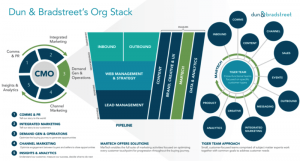The COVID-19 pandemic impacted work in ways that nobody saw coming. Millions of people lost their jobs either temporarily or permanently as companies closed for good, shut down for the time being, or trimmed back their workforce. Other employees were forced to create at-home work setups without advance warning, figuring out how to work full-time while the rest of the family, kids and pets included, were also stuck in the house. And many had to continue going into work, performing on the front lines as grocery store clerks and medical professionals, constantly exposing themselves to the threat of the virus.
Needless to say, COVID changed everything.
Now, as more people get vaccinated and the world reopens, many businesses are trying to learn from all of the changes they had to make during 2020. The future of work post-pandemic is unique, with many businesses remaining 100% remote or adopting a more hybrid approach than they had at the beginning of last year.
As with anything, there are pros and cons to these changes. Let’s explore them.
Pro: Employees Have More Options to Take Care of Themselves
Post-COVID, employers are setting up support to better protect employees, especially as the health crisis continues to impact us all. This support strives to help and improve all areas of an employee’s health, including mental, physical, and financial well-being. Examples of enhanced support offered by employers include:
- Child care help
- Community relief funds
- Financial aid
- Flexible hours of operation
- Improved sick leave
- No-cost community services
A big part of this involves creating schedules and systems that allow employees to be flexible so they can care for themselves and their families while still taking care of their job responsibilities and being productive.
Con: You (Probably) Can’t Hire Employees From Just Anywhere
If you’ve decided that your company is still going to have in-person meetings or other types of work gatherings, you can’t have employees who are dispersed around the country or world…or even the state, probably. If employees are required to attend live meetings, breakout groups, or other types of business gatherings, they have to live within a reasonable distance to travel there.
However, if you’re set on hiring remote workers from farther away – which is a great way to dip into a larger pool of talent – you can consider letting them virtually attend meetings. You can also set up satellite groups if there are a number of remote workers in the same geographic area.
Pro: Gig Work is More Popular Than Ever
During the pandemic, all sorts of workers lost their jobs, and contractors were no different. Furthermore, some of those who lost traditional jobs opted to go the gig industry work, becoming contractors and freelancers who offered the skills they honed during their time as traditional workers.
While a number of organizations reduced their contractor budget mid-pandemic, those budgets have started to open up again – and for some companies, they’ve even grown. Plus, companies love working with contractors because they offer an ideal combination of professionalism and flexibility. Contractors tend to be experts in their field, and companies can hire them without offering them business tools, office space, a salary, etc. That means that post-COVID, gig workers may have even more opportunities than they did before the pandemic.
Con: A Majority of Jobs Cannot Be Performed Remotely
According to McKinsey and Company, only 20% to 25% of workforces in advanced economies are able to work from home between three and five days a week without a loss of productivity. While this is around 5x more remote work than pre-pandemic and about the same as remote work during the pandemic, it’s possibly much less than people assume. For job seekers who feel that any and every industry, company, and brand is now adopting full-time remote work, they’ll be sorely disappointed as they begin hunting for their next opportunity.
Furthermore, some types of jobs that can technically be handled remotely are still more effective when done in person. For example, brainstorming with the rest of the team, making critical decisions for the company, and providing difficult-to-deliver feedback in a sensitive way are all best when done in person.
Pro: Flexible Work is More Enjoyable for Employees
It’s pretty obvious why flexible work is more enjoyable for most employees. They can do things like set their own schedule, attend to personal and family matters and run out for errands when they want to (assuming that type of flexibility is okay with the employer). When employees are given deliverables to work for instead of strict schedules to adhere to, many of them will be able to turn in excellent work without risking burnout or getting complacent at their job.
For some companies, the idea of having employees work simply to work, regardless of their actual workload or level of efficiency, is an antiquated idea. And when employees can run their life while remaining dedicated to their job, they’re happier overall, which means higher-quality work is turned in.
Cons: The Boundaries Can Get Fuzzy
Of course, there’s an equal and opposite issue to the benefit described above: All of that flexibility can leave the lines between professionalism and flexibility blurry. If you require employees to clock in, clock out and be present during specific work hours, you’ll have to find a way to ensure they’re doing just that – otherwise, some may take advantage of their supposed freedom. And setting deliverables instead of work hours means that employees actually have to deliver quality work on time, checking in as the project progresses to report the work they’ve done. This can require a lot of work on the part of the business to create, set up and explain the flexible rules, what they don’t mean and how everything will be tracked.
Business & Finance Articles on Business 2 Community(35)





